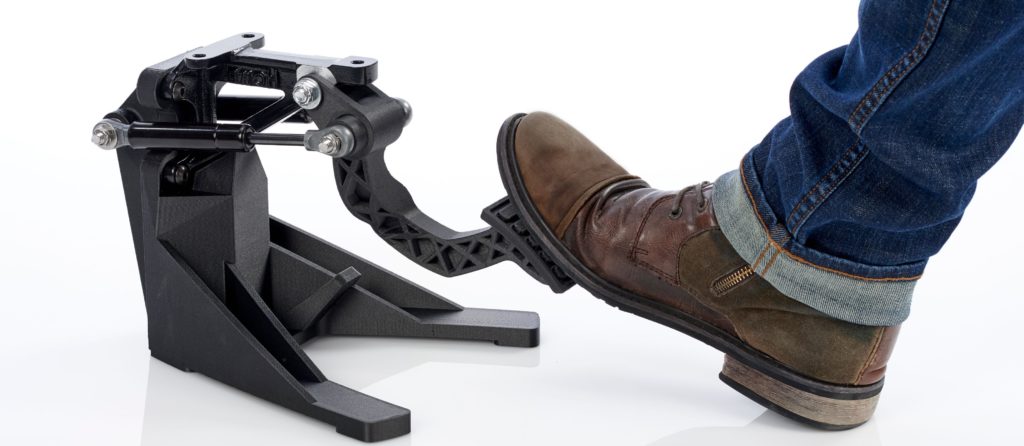One of the reasons that 3D printing, or additive manufacturing, is such a versatile technology is the wide range of 3D printing materials. While different compositions of plastics and metals form the bulk of materials used in professional 3D printing, there are applications that print using food, wood and even human tissue (bioprinting).
But, you can’t use all 3D printing materials in all 3D printers. As some of their names imply, different additive manufacturing technologies, like FDM, Polyjet and metal laser sintering will use different materials. In turn, the different materials they use make different printing technologies better suited for certain applications.
Most Common FDM 3D Printing Materials
FDM, or fused deposition modeling, printers are the most common 3D printers, mainly due to it being one of the oldest 3D printing technologies and its popularity with consumers. In FDM printers, a thermoplastic filament is heated to a near-liquid state and extruded from the print head. The printer then deposits the heated thermoplastic in ultra-fine beads along the material extrusion path on the printer’s build platform. The process is repeated, layer by layer, until the part is complete.
FDM machines are best for proof-of-concept models, and fast, low-cost prototyping of simple parts that might need machining. Professional FDM 3D printers use soluble supports and a broad range of engineering thermoplastics, and composites to achieve different outputs.
-
ABS (acrylonitrile butadiene styrene)
ABS enjoys a well-earned reputation for toughness, durability and heat and impact resistance. In an FDM machine, ABS makes excellent working prototypes.
-
PLA (polylactic acid)
One of the easiest materials to print with, biodegradable PLA can be strong but brittle. It’s best for concept models and non-functioning prototypes.
-
PETG (polyethylene terephthalate glycol)
Widely used in the food industry, PETG prints at lower temperatures for faster output times. It’s humidity and chemical resistant, highly transparent and can be food safe.
-
Nylon
Where would we be without nylon?! Strong, durable, lightweight, flexible, heat and impact resistant, nylon is perfect for functional prototypes and wear-resistant parts.
-
TPU (thermoplastic polyurethane)
TPU is a good choice when specifications call for vibration dampening. This is due to its flexibility and stretch-ability, combined with impact resistance. That also makes TPU ideal for flexible prototypes.
To learn more about FDM 3D Printing, check out our article PolyJet vs FDM A 3D Printing Technology Comparison.
